 by "Zachary Oberle" (zacharyoberle)
by "Zachary Oberle" (zacharyoberle)
Published 02/28/2017 at 13:55
 by "Zachary Oberle" (zacharyoberle)
by "Zachary Oberle" (zacharyoberle)
Published 02/28/2017 at 13:55
Tags: Project Hoondy
; Custom Exhaust
; DIY
; Maths
STARS: 4
The performance after-market for Hyundai’s Genesis Coupe is not very good. Some staunch proponents of the platform will argue otherwise, but they are wrong. They’ll say that there are many options for parts such as the numerous exhaust kits, but they fail to appreciate that most of those options are shit.
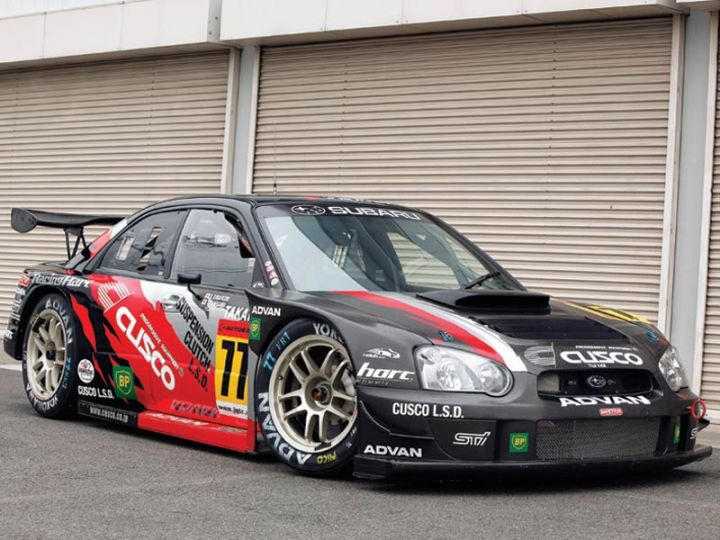
Oh, sure, there are some very solid bolt-ons for the GenCoupe. Some of the finest names in after-market performance make parts for the car, including
Cusco
and
ACT
. The trouble is that the Genesis Coupe tuning scene is hit-and-miss. You can get an amazing clutch/flywheel combo and differential, but if you want good engine mounts or a trick exhaust system you’re out of luck.
In our opinion, no manufacturer of significant performance-oriented car parts can claim their products are high-quality without being actively involved in motorsport. When it comes to exhaust systems, there are “premium” options for the Genesis Coupe, with ARK Exhaust being at the top of that list both in terms of cost and popularity. While their kits are shiny and their marketing is slick, nobody is out there regularly pounding on their gear in a race car.
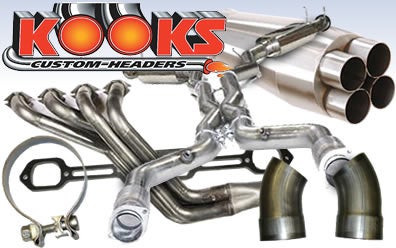
Contrast that with companies like Kooks Headers or Vibrant Performance, who do a significant volume of business with race teams. Both those companies make street-oriented products and their experience with racing shines through in the quality of everything they make.
So when it came time for us to scratch the performance exhaust itch on Project Hoondy, we just couldn’t bring ourselves to settle for a ho-hum off-the-shelf solution. Installing such
excellent
parts
on the car so far has led us to have high standards for any further upgrades. This left us with only one solution: a custom exhaust system.
Happily, when it comes to the art of custom automotive fabrication, exhaust systems are among t
he most common and least costly expressions
of the craft. There are numerous vendors who offer top-quality, stand-alone exhaust components that, with a little know-how, anyone can assemble into a quality exhaust system kit
.
Freed from the constraints of the GenCoupe aftermarket
, we had much greater control over what we wanted our exhaust system to look and sound like.
That far-reaching freedom meant
we had to set a realistic goal. While a full exhaust replacement with headers would have been nice, we weren’t looking to drop $3000+ on this project. In addition, we don’t think headers are necessary for us to reach our
eventual performance goals. Furthermore, close examination of the OEM exhaust system suggests there are far more gains to be had in some parts of it
than others. In fact, we think
that Hyundai expected many buyers of the Genesis Coupe to modify its exhaust and intentionally
cheaped out on certain parts of it because of that
.
Looking under the car
, we see that the front half of the OEM exhaust is quite nice:
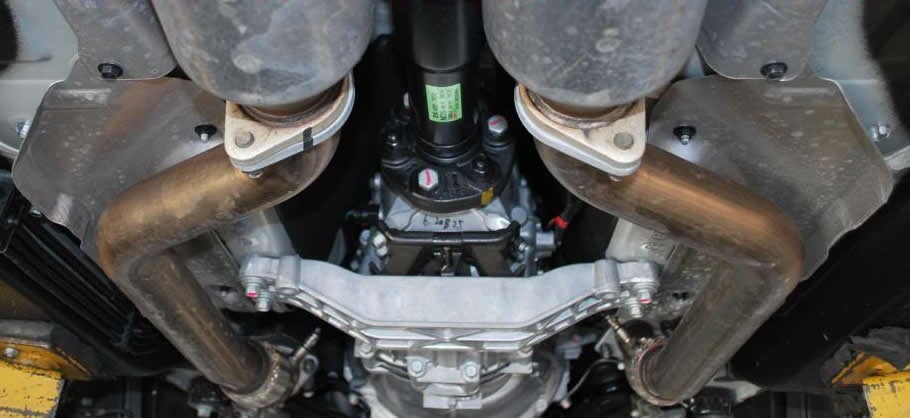
Down-pipes made from good quality stainless tubing with smooth, large-radius bends leading to the secondary cats. The different parts are mated with thick, stainless flanges.
There are some nice flex-joints installed right behind the primary cats as well. Lovely.
The rear half of the OEM exhaust setup, in stark contrast,
is just gross:
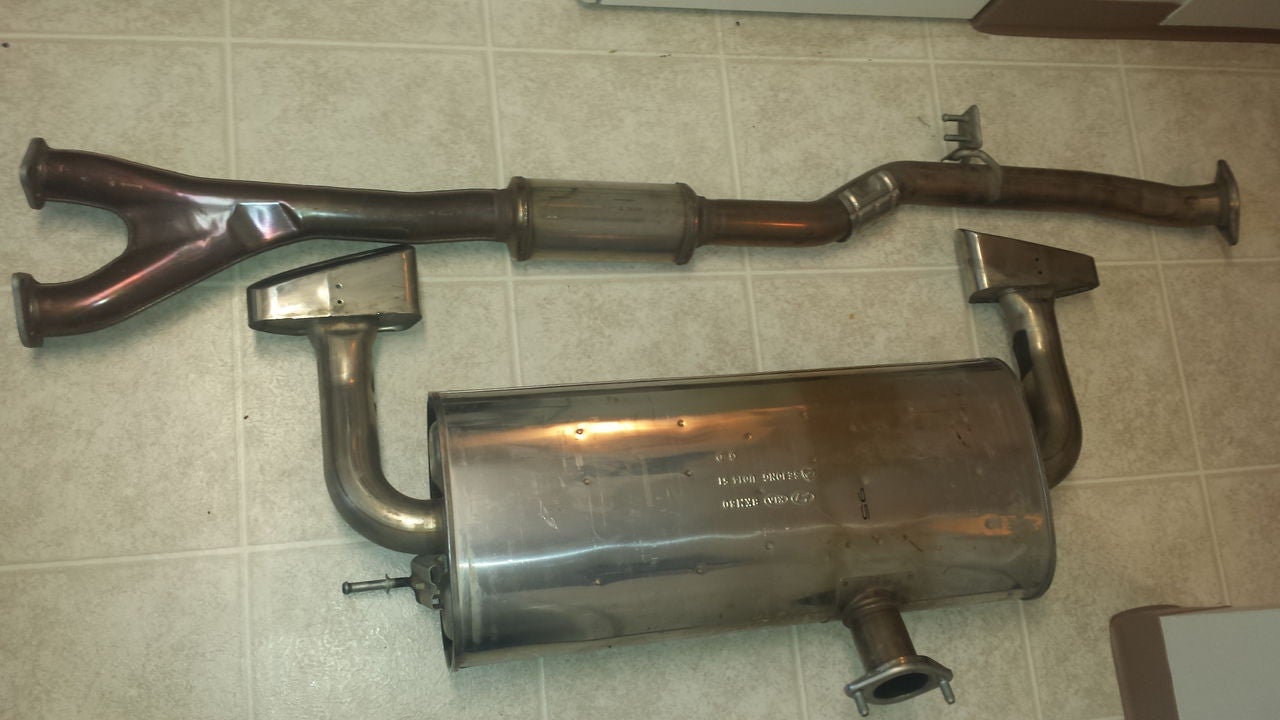
Those excellent down-pipes are fed into the nastiest Y-adapter we’ve ever seen which feeds
a single pipe that is way too small,
a crummy little resonator, and
a typical back-pressure-inducing trash can muffler. Then, adding
insult to injury, some absolutely gigantic fake exhaust tips.
Disgusting.
It seems
obvious to us that Hyundai assumed “cat-back” exhaust kits would be quite popular on the Genesis Coupe and spent as little money as possible on the rear half of the OEM exhaust in the expectation that it would frequently be
scrapped
anyway. Any GenCoupe
owners
who don’t want to modify their exhaust
probably also don’t care about
and/or will never notice the restriction in performance and fake
tips. Hyundai’s strategy here
contributes to a lower sticker price on the car for all parties concerned
(or a better profit
margin
) without pissing any owners off
. We think it was honestly a pretty smart move on their
part.
So it looked like limiting the scope of our exhaust build to a custom cat-back kit wouldn’t hurt us too badly performance-wise. A quick check on the tube diameter math backed this up.
Contrary to popular belief, bigger is not always better when it comes to exhaust pipe tube diameter. Sure, with turbocharged or supercharged cars it is difficult to have too big of an exhaust system. However, when dealing with naturally aspirated engines you need a careful balance between engine power and exhaust tub
e diameter.
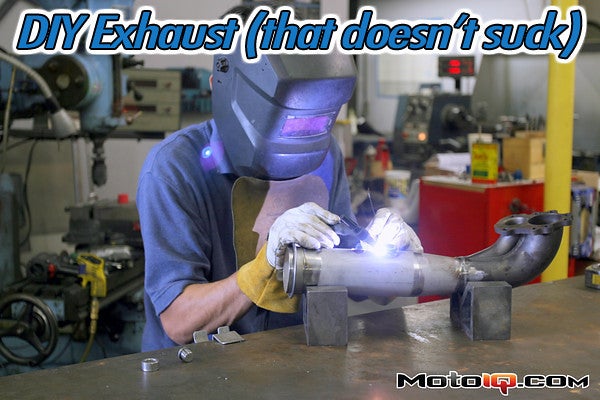
A compromise needs to be made between back-pressure and exhaust gas velocity. Mike Kojima and Sara Forst did a great job of explaining the concept in
this excellent MotoIQ article
. In essence, if you use too small of an exhaust pipe you will have overly high back-pressure, which robs top-end power, but if you use too large of an exhaust pipe you get low exhaust gas velocity which reduces mid-range torque. Keeping exhaust gas velocity high while maintaining low back-pressure is the name of the game and it’s a tricky game to play if you don’t understand the rules.
In order to determine the exhaust sizing
needs for your particular engine you can complete complicated equations involving engine displacement, exhaust gas temperature, fuel mass, and other variables. However, there is an easy and reliable shortcut that gets you to the heart of the issue.
Even experienced exhaust fabricators will agree that a simple horsepower-to-CFM conversion will give you accurate enough information to get you in the ballpark of what exhaust pipe diameter is right for your car. The exact conversion factor varies slightly, but it is generally accepted to be between 2.0 and 2.2 CFM of exhaust flow per horsepower.
From there you just need to determine how much CFM a given size of exhaust pipe supports and select the one that is closest to the needs of your platform. In general, good quality mandrel-bent exhaust pipe will flow 115 CFM per square inch of cross-sectional area. From there it is simple math to figure out what your car needs.
The Hyundai Genesis Coupe with the 3.8 liter V6 engine has 2.25 inch down-pipes as standard. We decided to check the flow of these pipes to see if changing them might yield increased performance.
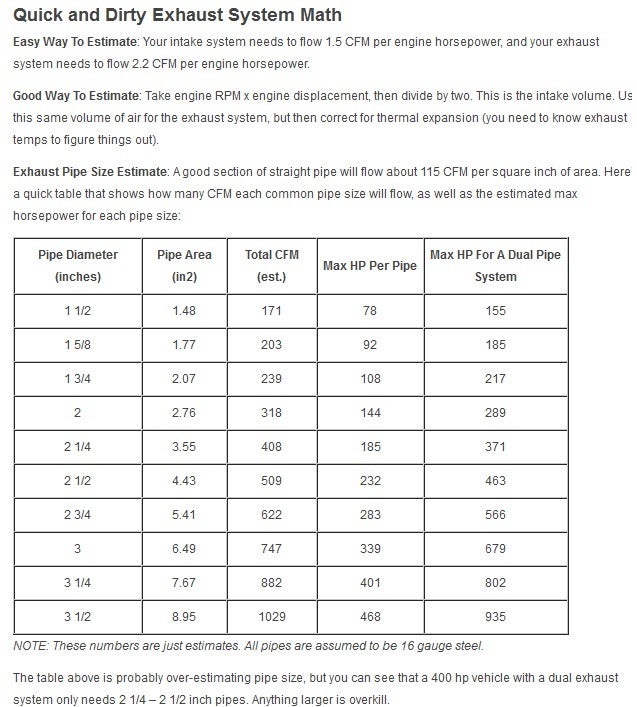
2.25 inch exhaust pipe has 3.55 square inches of cross-sectional area. Multiply that by 115 CFM per square inch and you get 408 CFM. Multiply
that
by two (two down-pipes) and you get 816 CFM of total exhaust flow. divide that by 2.2 to get back to horsepower and you get 371hp. The BK1 Genesis Coupe V6 makes just over 300 horsepower, so a dual 2.25 inch exhaust setup has more than enough flow to support the V6 engine even with copious power modifications. Going up to 2.5 inch down-pipes would give us enough flow for 463hp, which we’ll
never
hit while staying naturally aspirated. Going to 2.5 inch down-pipes would gain us slightly reduced back-pressure, but would drastically reduce exhaust gas velocity, costing us mid-range torque that we definitely don’t want to sacrifice.
Therefore, we can conclude that Hyundai knew
exactly
what they were doing when designing the OEM down-pipes, which means sticking with a 2.25 inch diameter for our custom cat-back exhaust system is definitely the way to go.
With this information in hand, we could confidently select individual components to build our custom exhaust. However, there was
a dizzying variety
to chose from. Tune in
next week
to see what brands won the race to be a part of
Project Hoondy!
!!! UNKNOWN CONTENT TYPE !!!
 "itschrome" (itschrome)
"itschrome" (itschrome)
02/28/2017 at 15:41, STARS: 0
So your going to stay with stock exhaust diameter but building a custom cat back. what kind of gains can you expect by doing this? is it just a matter of freeing the flow up with smoother bends over stock?
 "WiscoProud" (wiscoproud)
"WiscoProud" (wiscoproud)
02/28/2017 at 16:13, STARS: 0
I haven’t been following your build that closely, but I’ve read through this post and the prior one about the rear LSD and came away impressed both times. You do a good job of explaining the logic behind the decisions rather than just saying what the decision was.
 "Zachary Oberle" (zacharyoberle)
"Zachary Oberle" (zacharyoberle)
03/01/2017 at 02:02, STARS: 0
Look again at that pic of the rear half of the exhaust:
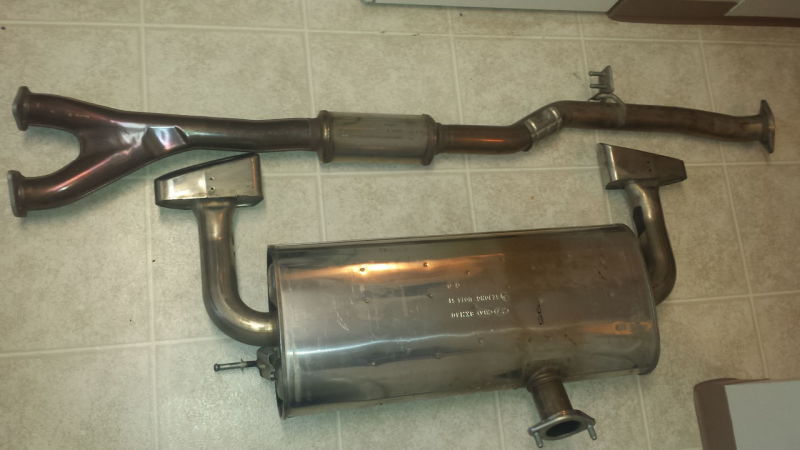
See, the lovely
dual
2.25 inch down-pipes get combined into a
single
2.25 inch mid-pipe via that
hideous
Y-pipe joiner you see in the upper-left of the image above.
Most of the gains will be from ditching the god-awful single-pipe rear half of the exhaust system and going to a “true dual” with twin 2.25" tubes running all the way to the back of the car.
As far as gains, we aren’t too concerned about it. This is more for sound than anything. ARK claims +9whp and +14wtq for their lame-ass “GRiP” true-dual cat-back for the Genesis Coupe. We’ll be using better components, especially the cross-over pipe, so I think we’ll get around their peak numbers with better under-the-curve gains.
Like I said, this particular part of Project Hoondy isn’t much about gains and we won’t be going to the trouble/expense of dyno testing on this exhaust build. We’ll get some idea of how we did down the line when we finally get a custom tune for the car.
Stay tuned!
 "Zachary Oberle" (zacharyoberle)
"Zachary Oberle" (zacharyoberle)
03/01/2017 at 02:08, STARS: 0
That’s what I strive for. Anyone can just arbitrarily decide to slap parts on their car. It’s actually surprisingly rare in the tuning world to see someone fully flesh out a logical build and then follow through on it.
If you like that style of writing, check out MotoIQ. They’ve got a ton of amazing builds and do a great job of conveying the reasoning behind all their tuning decisions. Their project V8 RX7 is probably my favorite:
http://www.motoiq.com/v8rx7.aspx
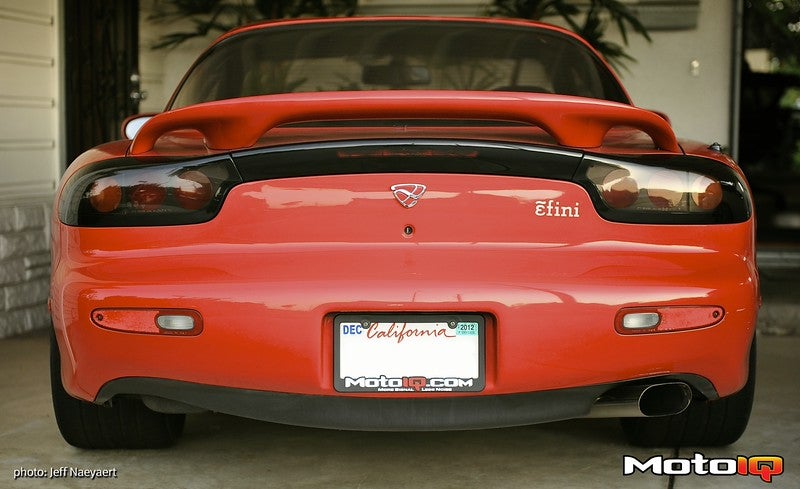
I like to think of Project Hoondy as a homage to their “hellafunctional” philosophy.
Stay tuned!
 "Zachary Oberle" (zacharyoberle)
"Zachary Oberle" (zacharyoberle)
03/01/2017 at 02:21, STARS: 0
Here ya go, pics of stock exhaust systems are hard to find, but this low-res one shows you what the problem is:
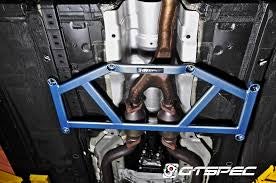
Ignore the blue after-market chassis brace and just look at the exhaust pipes behind it. That’s the stock down-pipes and secondary cats at the bottom of the image, leading into the stock mid-pipe that begins with that horrible y-pipe into a single 2.25 inch tube, complete with WTF-inducing flat-spot.
If you go back to the HP-per-CFM chart in the article you’ll see that a single 2.25 inch pipe will only support 185 horsepower. So going to a true dual 2.25 inch cat-back exhaust, even a crappy one, seriously un-corks the Genesis Coupe V6.
 "itschrome" (itschrome)
"itschrome" (itschrome)
03/01/2017 at 09:06, STARS: 0
ah ok, see the photos weren’t loading right yesterday so I sort of missed that. it all makes sense now. you’d be going true dual and thus allowing higher rate of flow. that makes perfect sense now.
 "WiscoProud" (wiscoproud)
"WiscoProud" (wiscoproud)
03/01/2017 at 10:58, STARS: 0
Will do. Thanks!